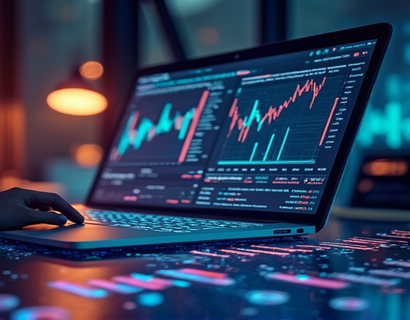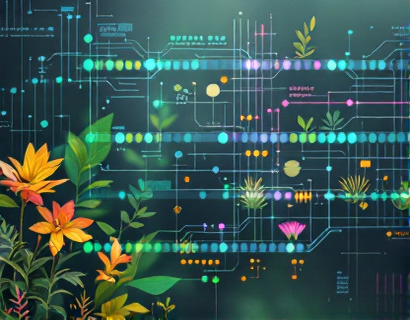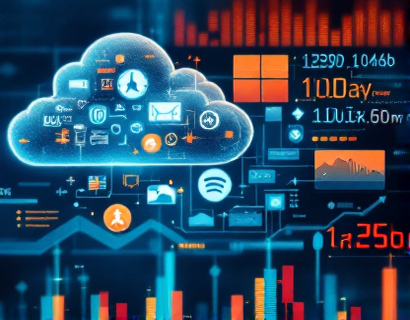Revolutionizing Device Performance: The Future of Open-Source Technology for Enhanced User Experience
The technological landscape is rapidly evolving, driven by the relentless pursuit of innovation and efficiency. At the heart of this transformation lies open-source technology, a paradigm that is reshaping the way we interact with devices and software. This article delves into the future of open-source operating systems, exploring how they are redefining device performance and user experience. By offering unmatched flexibility, extensive customization, and seamless integration, these systems are making advanced technology accessible and efficient for a broader audience.
The Rise of Open-Source Operating Systems
Open-source operating systems have been gaining traction in recent years, thanks to their inherent advantages over proprietary systems. The core principle of open-source software is transparency and collaboration, allowing developers from around the world to contribute to the development and improvement of the system. This collective effort leads to faster bug fixes, more robust security features, and a constant stream of new features and enhancements.
The appeal of open-source OS extends beyond the technical community. For everyday users, it means a more personalized and efficient computing experience. The ability to tailor the system to individual needs without being constrained by proprietary limitations is a game-changer. This flexibility is particularly valuable in a world where devices are increasingly interconnected and diverse.
Enhanced Device Performance
One of the most significant benefits of open-source operating systems is their impact on device performance. By leveraging community-driven optimizations and cutting-edge technologies, these systems can outperform their proprietary counterparts. For instance, open-source kernels and drivers are often more lightweight and efficient, reducing system overhead and improving overall speed.
Moreover, the modular nature of open-source software allows for better resource management. Users can selectively enable or disable components based on their specific needs, leading to a more streamlined and responsive system. This level of customization is particularly beneficial for devices with limited resources, such as smartphones and IoT devices, where efficiency is crucial.
User-Centric Design and Customization
The user-centric design of open-source operating systems is another key factor in their success. These systems prioritize usability and accessibility, ensuring that technology is not just powerful but also user-friendly. The ability to customize every aspect of the OS, from the desktop environment to system settings, empowers users to create a personalized experience that suits their preferences and workflow.
For tech enthusiasts and power users, this level of control is invaluable. They can experiment with different desktop environments, themes, and applications, creating a unique and optimized environment. For casual users, pre-built distributions and user-friendly interfaces make it easy to get started without the steep learning curve often associated with technology.
Seamless Integration Across Devices
In an era where devices are increasingly interconnected, seamless integration is a must. Open-source operating systems excel in this area, offering robust support for multi-device ecosystems. Whether it's synchronizing data between a smartphone, tablet, and laptop or integrating smart home devices, these systems provide a cohesive and consistent experience across platforms.
The use of open standards and protocols ensures compatibility and interoperability, reducing the friction often encountered when using different devices from various manufacturers. This is particularly important for businesses and organizations that rely on a diverse range of devices to function smoothly and efficiently.
Security and Privacy
Security and privacy are paramount in the digital age, and open-source operating systems address these concerns head-on. The transparency of open-source code allows security experts to scrutinize and audit the system, identifying and fixing vulnerabilities more quickly. This community-driven approach to security is often more effective than the closed, proprietary models of traditional operating systems.
Additionally, open-source OS typically place a strong emphasis on user privacy, with fewer backdoors and surveillance capabilities. Users have greater control over their data and can choose which applications and services have access to their information. This level of control is crucial in an era where data breaches and privacy violations are increasingly common.
Community and Ecosystem
The strength of open-source operating systems lies not only in their technology but also in the vibrant communities and ecosystems that surround them. A diverse and active community of developers, users, and contributors continuously push the boundaries of what is possible. This collaborative environment fosters innovation and ensures that the system remains relevant and up-to-date with the latest technological advancements.
The ecosystem around open-source OS includes a wide range of applications, tools, and resources. From productivity suites to creative software, users have access to a rich array of options that cater to various needs and preferences. This abundance of choices empowers users to find the best tools for their specific tasks, further enhancing the overall user experience.
Challenges and Considerations
While the benefits of open-source operating systems are numerous, there are also challenges and considerations to keep in mind. One of the primary hurdles is the learning curve associated with customization and management. For some users, the level of control and flexibility can be overwhelming, especially if they are accustomed to the more streamlined experience of proprietary systems.
Another consideration is the availability of support and documentation. While the open-source community is generally helpful, the quality and quantity of support can vary. Users may need to seek out community forums, documentation, and tutorials to get the most out of their system. However, this also fosters a sense of community and shared knowledge, as users often help each other overcome challenges.
Looking Ahead: The Future of Open-Source Technology
The future of open-source technology is bright, with ongoing advancements promising to further enhance device performance and user experience. As more organizations and individuals adopt these systems, the demand for better tools, documentation, and support will drive continued innovation. The integration of emerging technologies such as artificial intelligence, machine learning, and quantum computing will open new possibilities for open-source operating systems.
The shift towards more sustainable and energy-efficient computing is another area where open-source OS can make a significant impact. By optimizing resource usage and reducing the environmental footprint of devices, these systems align with the growing emphasis on sustainability in technology.
Conclusion
In conclusion, open-source operating systems are revolutionizing the way we interact with devices and software. By offering unmatched flexibility, extensive customization, and seamless integration, they are making advanced technology accessible and efficient for everyone. As the technology continues to evolve, the potential for innovation and improvement is vast, ensuring that open-source remains at the forefront of the digital revolution.










































